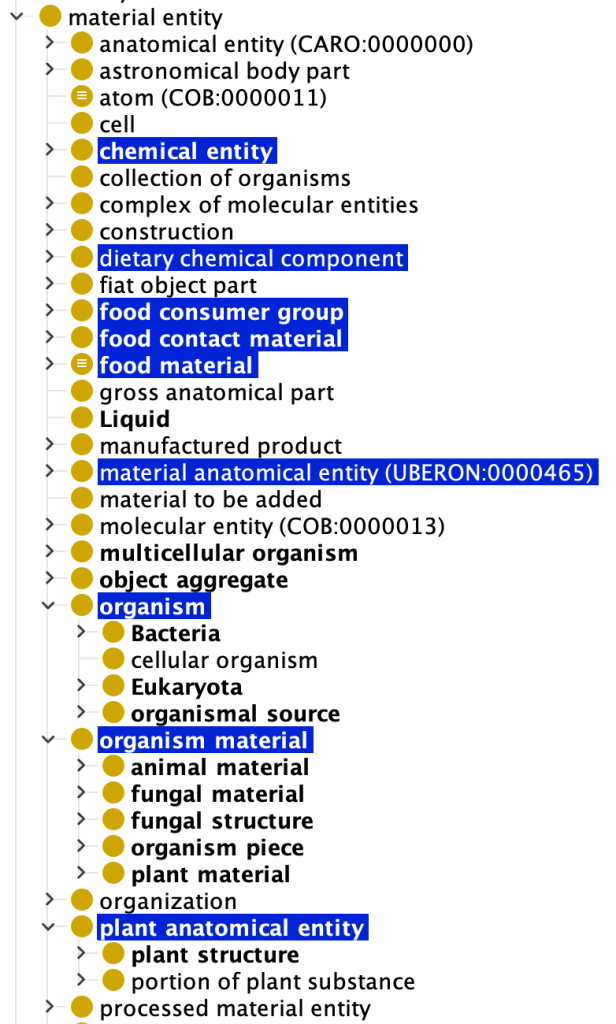
Update: As of June 2023, FoodOn has adopted the Core Ontology for Biology and Biomedicine (COB), which is OBO Foundry’s new initiative to provide an upper-level ontology framework that includes commonly used terms (entities) from across OBO ontologies. COB remains BFO compatible, and in fact uses some BFO terms directly, as shown in Figure 1. The diagrams on this page show the location of key FoodOn classes or facets (which are documented separately on the facets page) as they appear in the Protege ontology editor.

FoodOn maintains compatibility with the Basic Formal Ontology (BFO), which means that all the classes provided by FoodOn are directly organized under BFO classes, or are under other OBO Foundry ontology classes that are BFO compliant, and reasoning over FoodOn does not lead to BFO-related contradictions. Note that the new hierarchy starts with owl:Thing, rather than BFO:entity.
Many key FoodOn facets (many of which came from LanguaL) are located under the material entity class. Food material, plant and animal anatomy part references, taxonomy, and constituent dietary or food processing chemicals are all found here.

The “food material” hierarchy contains FoodOn’s main “food product” polyhierarchy of over 9,600 food products, as well as upper-level international, European and American food categorization schemas which will ultimately be mapped to FoodOn product type categories.

The evolving “food transformation process” class is positioned under BFO “process”. Some FoodOn processes can be multi-purpose (for example, freezing can be for food preservation, or to produce an effect, like in ice cream) others are specific to preservation or other process objectives.

Observable qualities of food – the flesh texture of fish, or the colour of a fruit flesh or skin for example – are located in “food object quality” under PATO characteristic (older references may mention a BFO “quality” term because the two are not yet ontologically unified).

Some other information categories that are about food items are located in “food datum” under “information content entity”. Such information usually can’t be seen directly as observable characteristics of a food item, but rather are legislative facts or manufacturer claims, or are information about the history of a food item or other entity. Dietary terms are under development here.